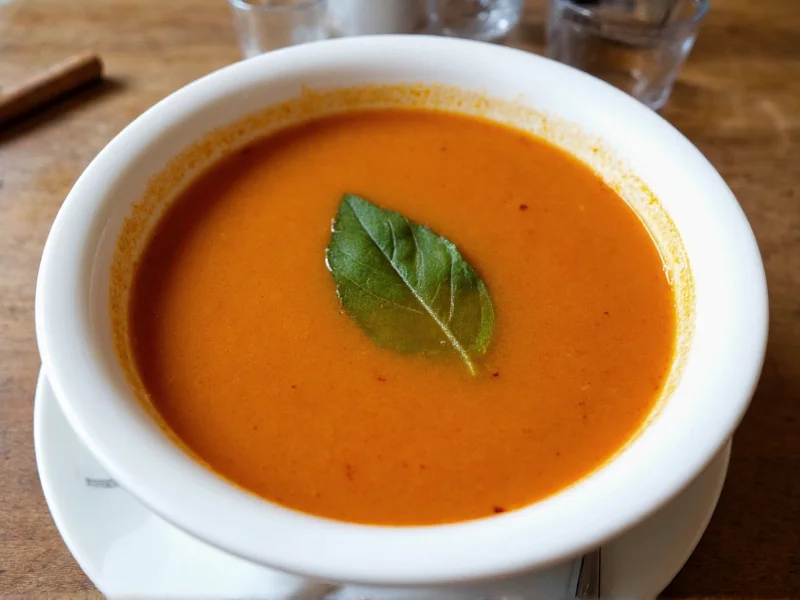Leaf soup represents one of humanity's most ancient culinary traditions, transforming simple foraged greens into nourishing meals that sustain communities across diverse climates and cultures. Unlike modern processed foods, traditional leaf soups maintain remarkable nutritional integrity while offering versatile preparation methods adaptable to seasonal availability and regional preferences.
Understanding Leaf Soup Varieties Across Cultures
Leaf soups manifest differently depending on geographical location and available resources. In West Africa, mfuo combines bitterleaf, pumpkin leaves, and okra in a rich broth. Southeast Asian cuisines feature sinigang na malunggay from the Philippines, where moringa leaves add distinctive flavor to tamarind-based soups. Mediterranean regions utilize wild greens like dandelion and chicory in minestra di erbe, while Native American traditions incorporate lamb's quarters and other indigenous greens.
| Leaf Type | Common Regions | Distinctive Characteristics |
|---|---|---|
| Moringa (Malunggay) | Philippines, India, Africa | Nutty flavor, exceptionally high in vitamins A and C |
| Bitterleaf | West Africa | Bitter taste balanced with palm oil and proteins |
| Spinach | Global | Mild flavor, versatile in both raw and cooked applications |
| Amaranth | Mexico, Africa, Asia | Earthy taste, high protein content compared to other leafy greens |
Nutritional Advantages of Leaf-Based Soups
Regular consumption of leaf soup delivers substantial health benefits that processed alternatives cannot match. The gentle cooking process preserves water-soluble vitamins while enhancing the bioavailability of fat-soluble nutrients when prepared with healthy fats. Research indicates that traditional leaf soups provide superior nutrient absorption compared to raw consumption of the same greens. The fiber content supports digestive health, while naturally occurring antioxidants combat inflammation. Unlike commercial vegetable broths that often contain excessive sodium, homemade leaf soups allow complete control over ingredients and seasoning.
Traditional Preparation Techniques
Authentic leaf soup preparation follows time-tested methods that maximize flavor and nutrition. Most traditions begin with thorough washing to remove soil particles while preserving delicate nutrients. The cooking sequence matters significantly—hardier greens like collards require longer simmering, while delicate leaves like spinach should be added near the end. Many cultures employ the "wilt-and-simmer" technique where leaves partially cook in their own moisture before broth addition. In Nigerian cuisine, cooks pound bitterleaf to reduce bitterness while releasing beneficial compounds. The addition of complementary ingredients follows specific timing: proteins typically simmer first, followed by vegetables, with leafy components added last to preserve color and nutrients.
Simple Home Preparation Guide
Creating nutritious leaf soup at home requires minimal equipment and adapts easily to available ingredients. Start with a quality broth—vegetable, chicken, or fish stock forms an excellent base. Sauté aromatics like onions, garlic, and ginger until fragrant but not browned. Add harder vegetables first (carrots, potatoes), allowing them to soften partially before introducing leafy components. For optimal nutrient retention, add greens during the final 5-7 minutes of cooking. Traditional thickening methods include pureeing a portion of the soup or adding ground nuts for West African variations. Season thoughtfully with natural flavor enhancers like lemon juice, vinegar, or herbs rather than excessive salt.
Seasonal Adaptations and Storage
Leaf soup preparation naturally adapts to seasonal availability. Spring brings tender greens like spinach and lettuce perfect for light broths. Summer offers abundant amaranth and moringa that withstand longer cooking. Fall and winter feature hardier greens like kale and collards that benefit from extended simmering. Properly stored in airtight containers, leaf soup maintains quality for 3-4 days in refrigeration. For longer preservation, freeze portions in labeled containers with headspace for expansion. When reheating, add a splash of water or broth to restore ideal consistency, and consider adding fresh herbs or a squeeze of citrus to revitalize flavors.
Common Questions About Leaf Soup Preparation
Many home cooks encounter similar challenges when preparing leaf-based soups for the first time. Understanding proper leaf selection, preparation techniques, and flavor balancing creates consistently excellent results. The following frequently asked questions address common concerns and provide practical solutions for perfecting your leaf soup preparation.
Which leaves are safest for making homemade leaf soup?
Stick to commonly consumed edible greens like spinach, kale, collards, amaranth, and moringa from reliable sources. Avoid wild plants unless you have expert identification knowledge, as some toxic plants resemble edible varieties. Always thoroughly wash leaves to remove potential contaminants.
How can I reduce bitterness in certain leaf soups?
Bitterness in greens like bitterleaf or dandelion can be reduced through several methods: blanching leaves in boiling water for 1-2 minutes before adding to soup, adding a small amount of acid like lemon juice or vinegar during cooking, or incorporating natural sweeteners like roasted squash. Traditional preparation often includes pounding bitter leaves to release compounds that cause bitterness.
What's the best way to preserve nutrients when making leaf soup?
To maximize nutrient retention, avoid overcooking greens—add them during the final 5-7 minutes of preparation. Use minimal water to prevent leaching of water-soluble vitamins. Cooking with a small amount of healthy fat like olive oil enhances absorption of fat-soluble vitamins. Cover the pot while cooking to minimize vitamin C loss, and avoid adding baking soda, which destroys thiamine and folate.
Can I make leaf soup without meat or animal products?
Absolutely. Many traditional leaf soups are naturally vegetarian or vegan. Use vegetable broth as a base and incorporate protein-rich ingredients like beans, lentils, or nuts. West African soups often use ground peanuts for richness and protein. For umami depth without animal products, try adding dried mushrooms, tomato paste, or fermented seasonings like miso (added at the end of cooking).
How do I properly store leftover leaf soup?
Cool soup quickly by placing the pot in an ice bath before transferring to airtight containers. Refrigerate for up to 4 days or freeze for 2-3 months. When reheating, add a small amount of liquid as soups often thicken during storage. Avoid repeated reheating cycles—portion leftovers into single-serving containers for optimal freshness and food safety.











 浙公网安备
33010002000092号
浙公网安备
33010002000092号 浙B2-20120091-4
浙B2-20120091-4